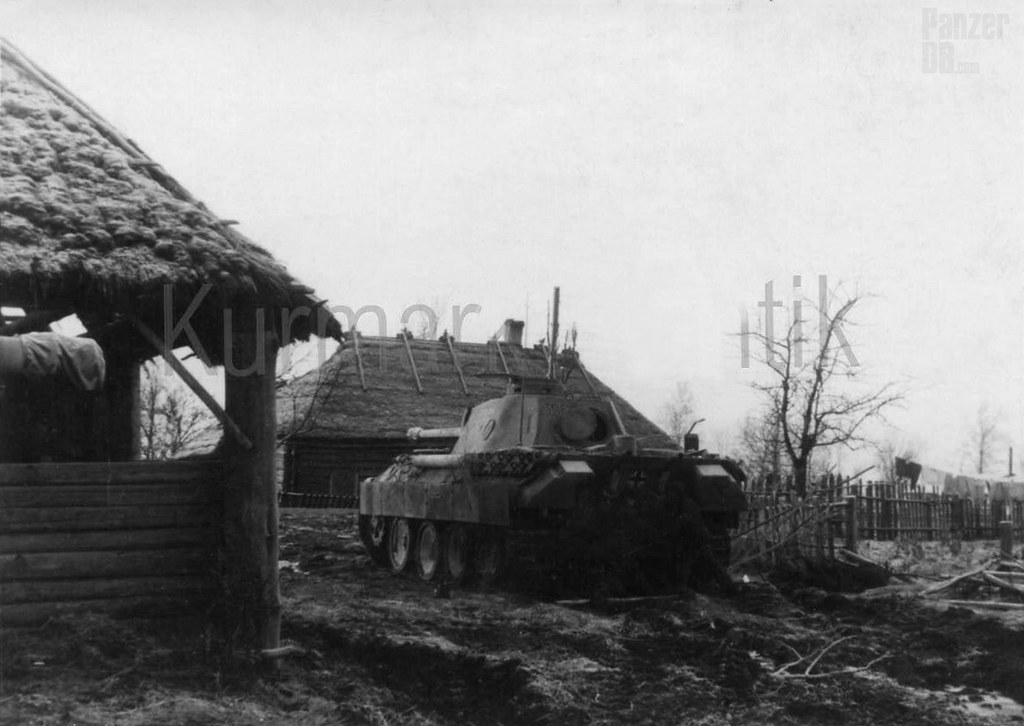#Panzerkampfwagen V
Photo
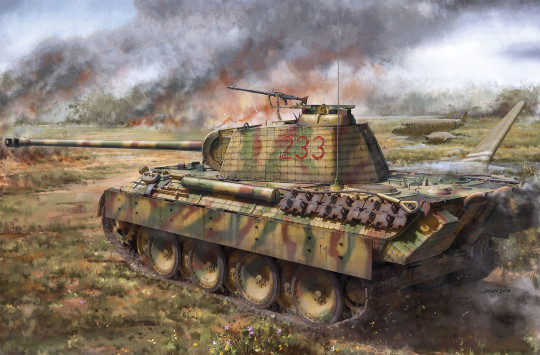
Panzerkampfwagen V Panther Ausf A
©Artwork by Jason - 2018
#WWII#Artwork#Jason#Char#Tanks#Char moyen#Medium tank#Panzerkampfwagen V#Panzerkampfwagen V Panther#Panther
10 notes
·
View notes
Text

An American M10 fires at German targets on the other side of the Loire River in the center of the destroyed city of Orléans, August 18th, 1944.
The M10 was an American tank destroyer built as a part of the US tank destroyer doctrine leading up to and during World War II. Armed with a 76.2mm M7 gun, it was lightly armored and was open topped, meaning the turret crew had no protection above them. However, US doctrine saw tank destroyers as vehicles that were meant to respond to any large armor assault, attacking using fast ambush tactics, not requiring them to be well armored or protected. Tank destroyer crews were discouraged from direct combat. Heavier German armor such as the Panzerkampfwagen V 'Panther' saw the development of the M10's successor, the M36, armed with a larger 90mm gun among other improvements.
2 notes
·
View notes
Photo
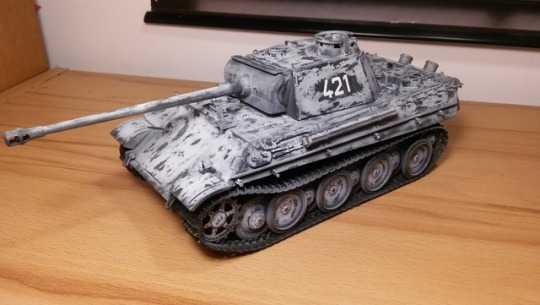
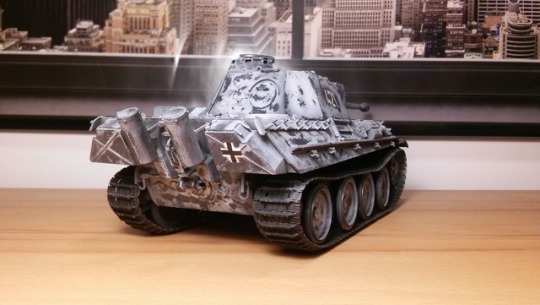
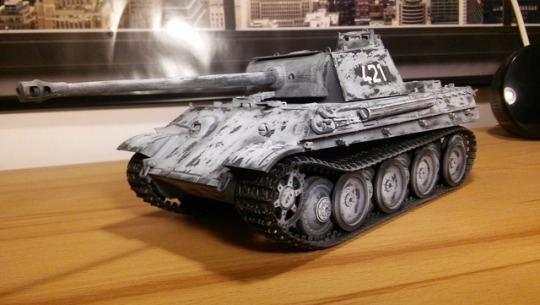
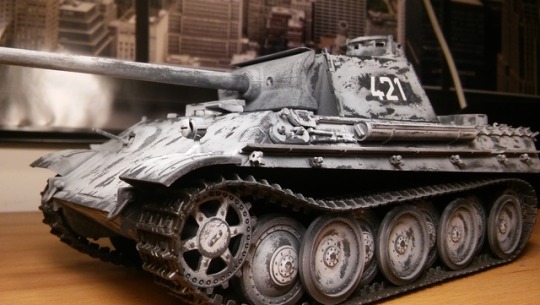


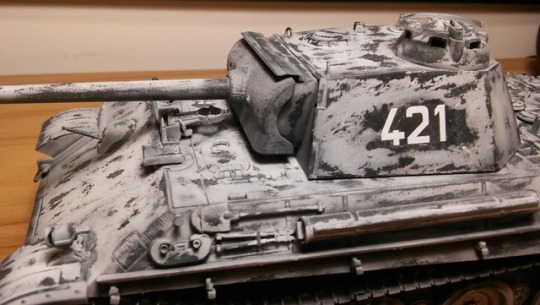

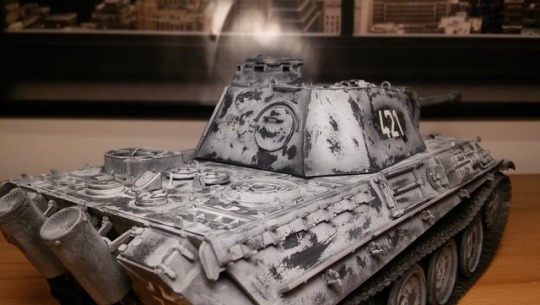
This is how it looks so far. I'm looking forward to add some mud, rust and snow effects. The model is Italeri Panther 1:35 wot edition.
#panther#tank#world of tanks#panzerkampfwagen#winter#camouflage#model making#scale model#italeri#tamiya#airbrush#panzerkampfwagen v#panzer#history#wermacht#germany#wwii#world war 2#war
94 notes
·
View notes
Photo

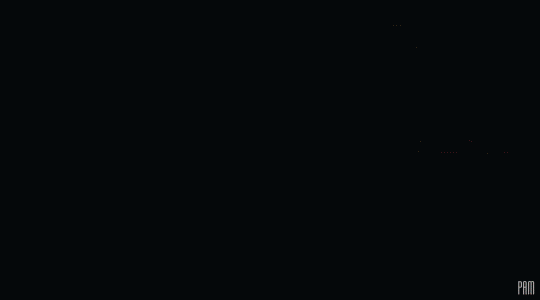
Battlefield V (2018)
#2018#gif#gaming#WWII#Battlefield V#Battlefield#Peter Muller#237#Stefan#Anton-One#Waal#Nijmegen#Netherlands#Rhine#Cologne#Germany#Tiger I#Panzerkampfwagen VI#tank
10 notes
·
View notes
Photo
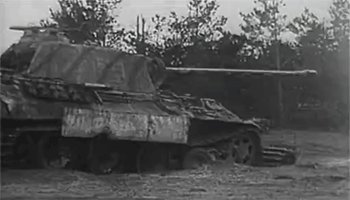


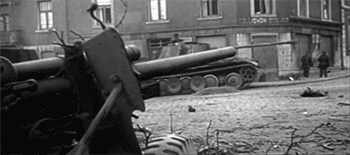
Panzerkampfwagen V Panther
The Panther is a German medium tank deployed during World War II on the Eastern and Western Fronts in Europe from mid-1943 to the war's end in 1945. It had the ordnance inventory designation of Sd.Kfz. 171. It was designated as the Panzerkampfwagen V Panther until 27 February 1944, when Hitler ordered that the Roman numeral "V" be deleted. Contemporary English language reports sometimes refer to it as the "Mark V".
The Panther was intended to counter the Soviet T-34 and to replace the Panzer III and Panzer IV. Nevertheless, it served alongside the Panzer IV and the heavier Tiger I until the end of the war. It is considered one of the best tanks of World War II for its excellent firepower and protection, although its reliability was less impressive.
#the panther#panzerkampfwagen v panther#german medium tank#mark v#wwii#ww2#weapon#combat#fighting#battle#nazi germany#gif
15 notes
·
View notes
Text
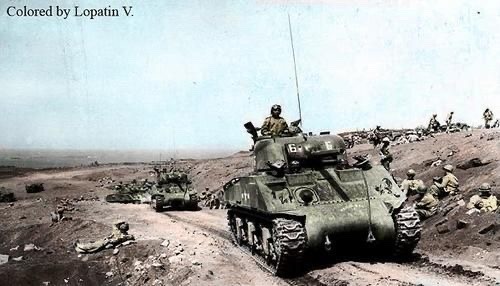
Iwo Jima, 1945
#tank#tankers#us marine corps#char#tahk#el tanque de guerra#panzerkampfwagen#wwii#iwo jima#Sherman#sherman tank#colorization#lopatin v
27 notes
·
View notes
Photo
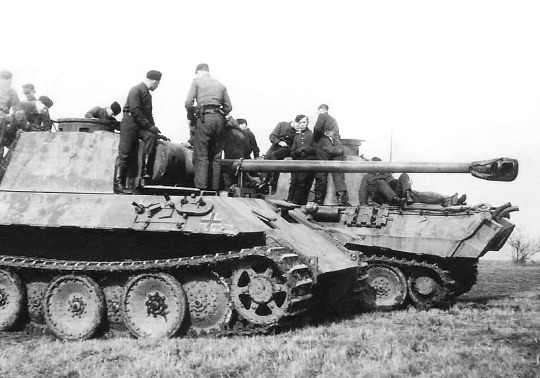
Panzerkampfwagen Panther (7,5 cm Kw.K. L/70) (Sd.Kfz. 171) Ausf. D
3 notes
·
View notes
Photo
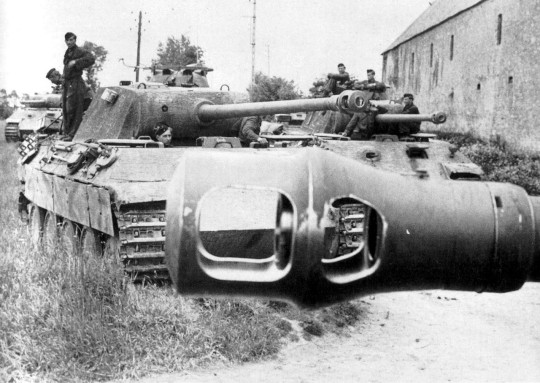
Des chars Panzerkampfwagen V Panther Ausf. A du 130e Régiment de la Panzer Lehr Division devant la ferme des Pallières en direction du hameau de Jérusalem à Tilly-sur-Seulles – Opération Perch – Bataille de Normandie – Calvados – Normandie – France – 9 juin 1944
#WWII#Opération Overlord#Bataille de Normandie#Battle of Normandy#Opération Perch#Armée allemande#Wehrmacht#Heer#Panzer Lehr Division#Blindés#Chars#Tanks#Char moyen#Panzerkampfwagen V#Panzer V#Panther#Tilly-sur-Seulles#Calvados#Normandie#Normandy#France#09/06/1944#06/1944#1944
14 notes
·
View notes
Text
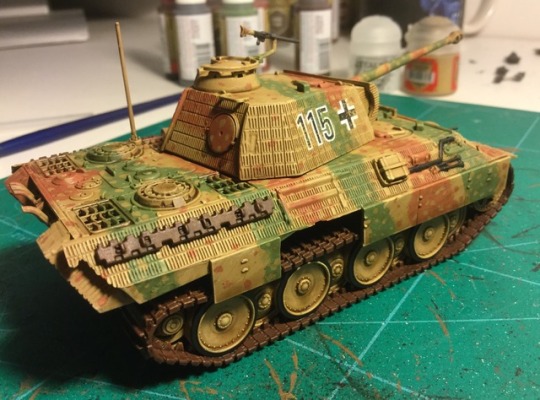


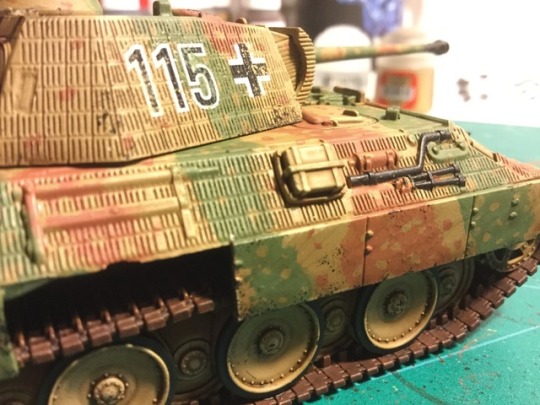
Panther = done! So happy with how it came out
11 notes
·
View notes
Text
So you're ready for Tier VII in the German Line... and the Panther awaits you after the VK 30 01 D. And The Panther is a great tank, not to mention one of the most historically iconic tanks in history, so an exciting tank to look forward to! It gets a lot of criticism in Blitz, IMHO, wrongly so, but you need to make up your own mind....
#panzerkampfwagen v panther#panzermuseum munster#tank chat#tank museum at bovington#panther#the most controversial panzer#first person shoot#world of tanks#wot blitz#blitz#game#wotb#mobile#download#wot
0 notes
Photo
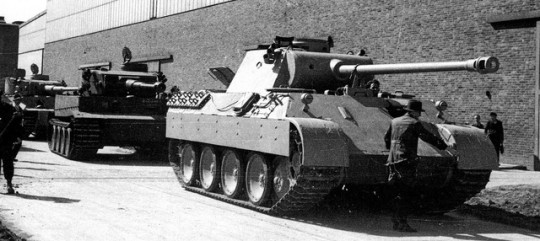
A panzer V “Panther” Ausf.D and two Panzer VI “Tiger” Ausf.H just left the assembly line in the yard of the Henschel & Sohn factory.
Kassel,Hessen, Germany. May 1943
#ww2#ww2 tanks#wwii#panzerkampfwagen#panzer v#panzer vi#tiger#panther#75mm gun#88mm gun#panzerwaffe#panzer division#ww2 history#medium tank#heavy tank#main battle tank#henschel#ausf h#ausf d
15 notes
·
View notes
Text
TIGER 1
Tiger I adalah nama tank berat terkenal buatan Jerman yang telah dipakai sejak 1942 dan digunakan di berbagai pertempuran pada Perang Dunia II. Panzerkampfwagen VI Tiger Ausf. E adalah sebutan resmi tank ini, tetapi sering disingkat disingkat Tiger. Tank Tiger I adalah tank pertama Angkatan Darat Jerman Nazi yang memiliki senjata utama kelas berat dan dapat membuat takut tank-tank Soviet di Front Timur. Tank Tiger pertama kali diterjunkan ke Leningrad, saat pecahnya peristiwa Pengepungan Leningrad di bawah naungan Waffen SS. Pasukan Jerman, dengan dukungan tank Tiger, dapat merebut kota Leningrad dan meneruskan perjalanan, tetapi harus dibayar mahal, karena banyak yang mogok akibat kerusakan transmisi.
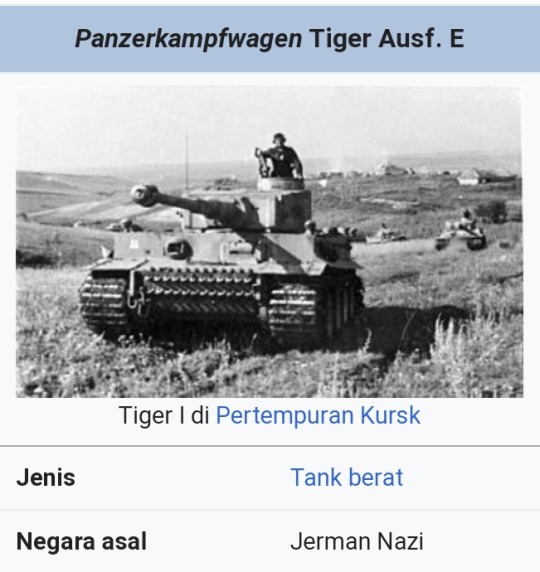

Perisai25–120 mm (0,98–4,72 in)[1][2]Senjata
utama1× 8,8 cm KwK 36 L/56
92 peluruSenjata
pelengkap2× 7,92 mm MG 34
4,500 peluruJenis MesinMaybach HL230 P45 V-12
700 PS (690 hp, 515 kW)Daya kuda/ton13 PS/t (9,6 kW/t)Suspensiinterleaving wheelKelonggaran tanah0,47 m (1 ft 7 in)Kapasitas tangki540 L (140 US gal) including reserveDaya jelajah110–195 km (68–121 mi)Kecepatan45,4 km/h (28,2 mph)
Tank Tiger I ini sudah dicap dengan "tank berdesain luar biasa",[3] namun karena proses produksi yang tergesa-gesa dengan metode penekanan buruh dan dengan bahan bijih besi yang sulit untuk didapatkan hanya ada sekitar 1,347 yang berhasil dibuat antara Agustus 1942 dan Agustus 1944. Tank Tiger sangat rentan terhadap kerusakan roda karena membeku saat musim dingin Rusia (yang terkenal ganas sejak Invasi Napoleon ke Rusia di 1812). Produksi tank ini kemudian dihentikan guna menghemat bahan baku dan membuat versi ke-2 yang lebih "kompeten" untuk berjuang membela negara di timur; tank tersebut dinamai Tiger II.
Satu-satunya Tiger I yang masih berfungsi dengan baik berada di "The Tank Museum" di kota Bovington, Britania Raya. Tiger I yang berada di Inggris ini disebut dengan nama julukan Tiger 131.
andai dulu Indonesia punya tank saat perang melawan penjajah mungkin sekarang bisa jadi negara yg sukses dan lebih majuu
2 notes
·
View notes
Photo

Battlefield V (2018)
#2018#gaming#WWII#Battlefield V#Battlefield#Peter Muller#237#Stefan#Anton-One#Tobruk#Libya#Tiger I#Panzerkampfwagen VI#tank
8 notes
·
View notes
Text

• Panzer 38(t)
The Panzerkampfwagen 38(t), originally known as the ČKD LT vz. 38 was a tank designed during the 1930s, and developed in Czechoslovakia. It saw extensive use in World War 2.
The Panzer 38(t) was a conventional inter-war tank design, with riveted armour. The armour varied in thickness from 10 mm to 25 mm in most versions. Later models (Ausf. E on) increased this to 50 mm by bolting on an additional 25 mm armour plate to the front portion of the hull. The sides received an additional 15 mm increase of armour from Ausf. E production runs onward. The two-man turret was centrally located, and housed the tank's main armament, a 37 mm Skoda A7 gun with 90 rounds of ammunition. In addition, a 7.92 mm machine gun was in a ball mount to the right of the main gun. This machine gun could be trained on targets independently of the main gun, or coupled to the main gun for use as a conventional coaxial machine gun. The driver was in the front right of the hull, with the radio operator seated to the driver's left. The radio operator manned the hull-mounted 7.92 mm machine gun in front. Minor adjustments, such as adjustable seats for the driver and firmer footing for the commander/gunner and loader, were provided in German service. A total of 2,550 rounds were carried for the bow and turret machine guns. The driver could also fire the hull machine gun with a trigger fitted on the left tiller bar. In German service, a loader position was added to the turret by reducing the ammunition capacity by 18 rounds. All future Panzer 38(t) tanks were rebuilt according to this specification and those already in service were modified accordingly. The engine was mounted in the rear of the hull and powered the tank through a transmission at the front of the hull with five forward gears and one reverse gear. The track ran under four rubber-tired road wheels and back over a rear idler and two track return rollers. The wheels were mounted on a leaf-spring double-bogie mounted on two axles.
In 1935, the Czechoslovak tank manufacturer ČKD was looking for a replacement for the LT-35 tank they were jointly producing with Škoda Works. The LT-35 was complex and had shortcomings, and ČKD felt there would be orders both from the expanding Czechoslovak army and for export. ČKD decided to use a leaf-spring suspension with four large wheels for their new tank with an export success under the name "TNH". With small variations for each customer, 50 were exported to Iran, 24 each to Peru and Switzerland, Lithuania also ordered some. The British Royal Armoured Corps (RAC) had one trial model delivered on March 23rd, 1939 to Gunnery School at Lulworth. A report stated that "the (bow) gunner could not sit back comfortably as the wireless set was in the way of his left shoulder". The report also stated that, due to the shudder while the vehicle was on the move, it was impossible to lay the gun. As a result, the British did not purchase the LT-35 and the trial model was returned.
In the fall of 1937, the Czechoslovak Armed Forces launched a contest for a new medium tank; Škoda, ČKD and Tatra competed. Škoda Praga submitted the existing joint production export model mentioned above. ČKD also entered a prototype separate from the above, the interesting V-8-H (later called the ST vz. 39), which proved to have numerous mechanical problems. Tatra, known mostly for its smaller, wheeled armoured cars, submitted a paper entry that was a very novel concept that completely changed the layout of a tank, which concept they patented in 1938. On July 1st, 1938, Czechoslovakia ordered 150 of the TNHPS model, although none had entered service by the time of the German occupation. After the takeover of Czechoslovakia, Germany ordered continued production of the model as it was considered an excellent tank, especially compared to the Panzer I and Panzer II that were the Panzerwaffe's main tanks during the outset of WWII. It was first introduced into German service under the name LTM 38; this was changed in January 1940 to Panzerkampfwagen 38(t). The relatively small turret of the Panzer 38(t) was incapable of mounting a cannon powerful enough to defeat more heavily armoured tanks such as the T-34, so production of the Pz. 38(t) halted in June 1942 when more than 1,400 had been built. Other examples of the Pz. 38(t) were also sold to a number of other Axis nations, including Hungary (102), Slovakia (69), Romania (50), and Bulgaria (10).
The main advantages of the Panzer 38(t), compared to other tanks of the day, were a high reliability and sustained mobility. In one documented case, a regiment was supplied with tanks driven straight from the factory in 2.5 days instead of the anticipated week, without any mechanical breakdowns. In the opinion of the crews, the drive components of the Pz. 38(t) - engine, gear, steering, suspension, wheels and tracks - were perfectly in tune with each other. The Pz. 38(t) was also considered to be very easy to maintain and repair. After production of the Pz. 38(t) ceased, the chassis was used for tank destroyer designs, which were produced in greater numbers than the original Pz. 38(t). From 1942–1944, about 1,500 examples of the Marder III model were produced. It was replaced by the Jagdpanzer 38(t), based on a modified Panzer 38(t) chassis, of which approximately 2,800 were produced. The Panzer 38(t) chassis was also the basis for an anti-aircraft gun carrier, the Flakpanzer 38(t), of which about 140 were produced.
The Panzer 38(t) performed well in the invasion of Poland in 1939 and the Battle of France in 1940. It was better armed than the Panzer I and Panzer II tanks. It was on a par with most light tank designs of the era, although it was unable to effectively engage the frontal armour of medium, heavy and infantry tank designs. It was also used in the German invasion of the Soviet Union from 1941 onwards in German and Hungarian units, but was outclassed by Soviet tanks such as the T-34. Some ex-German units were issued to the Romanians in 1943, after the loss of many of the Romanian R-2 tanks. By then, it had become largely obsolete, though the chassis was adapted to a variety of different roles with success. Notable variations include the Sd.Kfz. 138 Marder III mobile anti-tank gun, the Sd.Kfz. 138/1 Grille mobile howitzer, Flakpanzer 38(t) and the Jagdpanzer 38(t) "Hetzer" tank destroyer. The German tank commander Otto Carius, who was credited with over 150 'kills', described an action in a 38(t) in July 8th, 1941: "It happened like greased lightning. A hit against our tank, a metallic crack, the scream of a comrade, and that was all there was! A large piece of armour plating had been penetrated next to the radio operator's seat. No one had to tell us to get out. Not until I had run my hand across my face while crawling in the ditch next to the road did I discover that they had also got me. Our radio operator had lost his left arm. We cursed the brittle and inelastic Czech steel that gave the Russian 47mm anti-tank gun so little trouble. The pieces of our own armour plating and assembly bolts caused considerably more damage than the shrapnel of the round itself."
The above report highlights the reason why the 38(t) was pulled out of front lines in favour of heavier Panzer III, IV and StuG IIIs. Panzer 38(t) continued to serve after 1941 as a reconnaissance vehicle and in anti-partisan units for some time. Several captured examples were refitted with Soviet DTM machineguns and employed by the Red Army. At the start of Operation Barbarossa, the Germans found Soviet T-34 tanks to be superior, as the German 37 mm Pak36 anti-tank gun proved incapable of penetrating the T-34's armour. To neutralize the T-34, the Germans mounted a captured Soviet 76.2mm gun on the chassis of the 38(t) model as a stop-gap measure and called it the "Marder III". Crews of early Marder III models fought exposed on top of the engine deck. Efforts to provide Marder III crews with more protection eventually lead to the Hetzer design.
The T-38 was the local designation for the wartime deliveries of Panzer 38(t)s from Germany to Romania in 1943. T-38 served with the forces operating in Kuban. within 2nd Tank Regiment and later the 54th Company attached to the HQ and the cavalry corps in Kuban and Crimea. T-38 tanks were still in action with the 10th Infantry Division and Cavalry Divisions in 1944. In the Slovak Army, this tank received designation LT-38. Because of the first series of the LT-38 was not finished in March 1939 and as it was seized by Nazi Germany, the army of the Slovak State, a German ally in the Polish and Soviet campaigns, initially had only LT-35 tanks. In 1940 Slovak Army ordered 10 tanks, which were used in Operation Barbarossa. Two tanks were destroyed, other 8 tanks later returned to Slovakia. After that, Slovak Army ordered another 27 tanks, and when Germans started withdrawing Panzer 38(t) tanks, Slovak Army received another 37 tanks from Germany. 13 tanks of this type were used by slovak insurgents during the Slovak National Uprising in 1944.
#second world war#world war ii#world war 2#military history#wwii#history#german history#czechoslovakia#tank warfare#tanks#military equipment#panzer 38
38 notes
·
View notes
Video
Panzerkampfwagen „Panther“ (7,5 cm Kw.K. L/70) (Sd.Kfz. 171) Ausf. D by Panzer DB
Via Flickr:
Pz.Kpfw. V Panther Ausf. D stopped in some village on Eastern front. This Panther might have been assembled around April 1943. It features a special armor cap for snorkel tubes on engine deck. ________ The Panzer Pictures Database | @PanzerDB (Twitter) | panzerdb.com
2 notes
·
View notes

